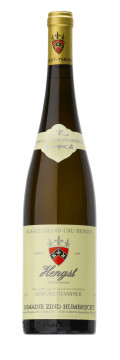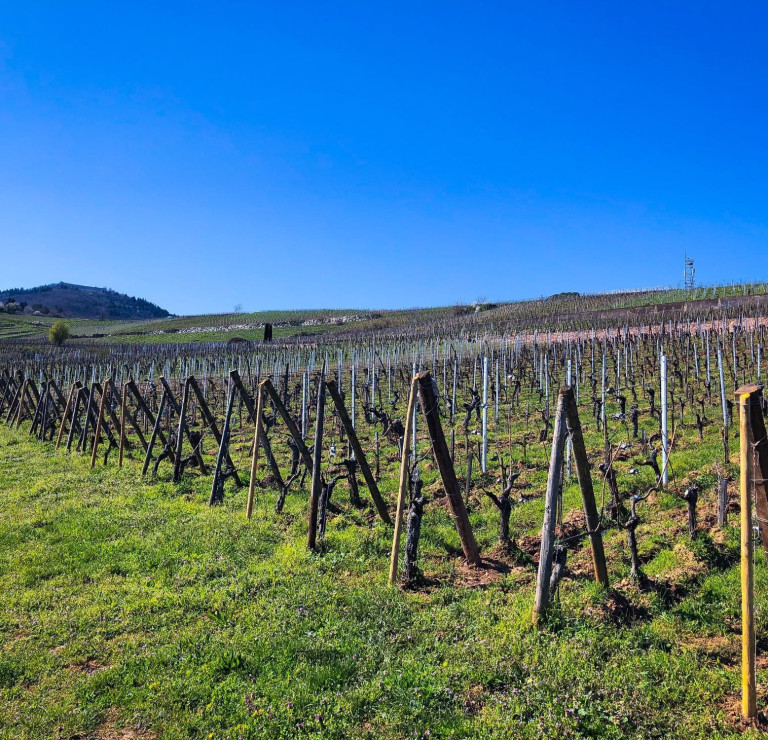
Technical presentation
| Bottling : | In 1997 |
|---|---|
| Acquired alcohol : | 14.6 ° |
| Residual sugar : | 18.0 g/l |
| Total acidity : | 3.6 g/l H2SO4 (5.6 g/l Tartrique) |
| pH : | 3.8 |
| Yield : | 29 hl/ha |
| Grape variety : | Gewurztraminer |
| Terroir : | Grand Cru Hengst |
| Sweetness index : | 2 |
| Soil : | Calcareous Marl from the Oligocene period, South/South East facing, medium/steep slope |
Description of the wine Gewurztraminer Grand Cru Hengst 1996
The south-east exposure of the Hengst is responsible for a very dry meso-climate. The botrytis is rare, but the marl limestone soil (highest pH of the estate) produced a powerful, spicy wine. Usually very hard to drink in its youth, the Hengst 96 shows great elegance and refinement. For long keeping.


The Hengst Grand Cru of Wintzenheim
The Hengst was first mentioned in the 9th century in an endowment of the Murbach Abbey. The lord of Haut Landsbourg as well as the bailiff of Kaysersberg shared the feudal rights up to the Great Revolution, whilst various noble families, abbeys and the bourgeoisie of Colmar exploited important parcels.